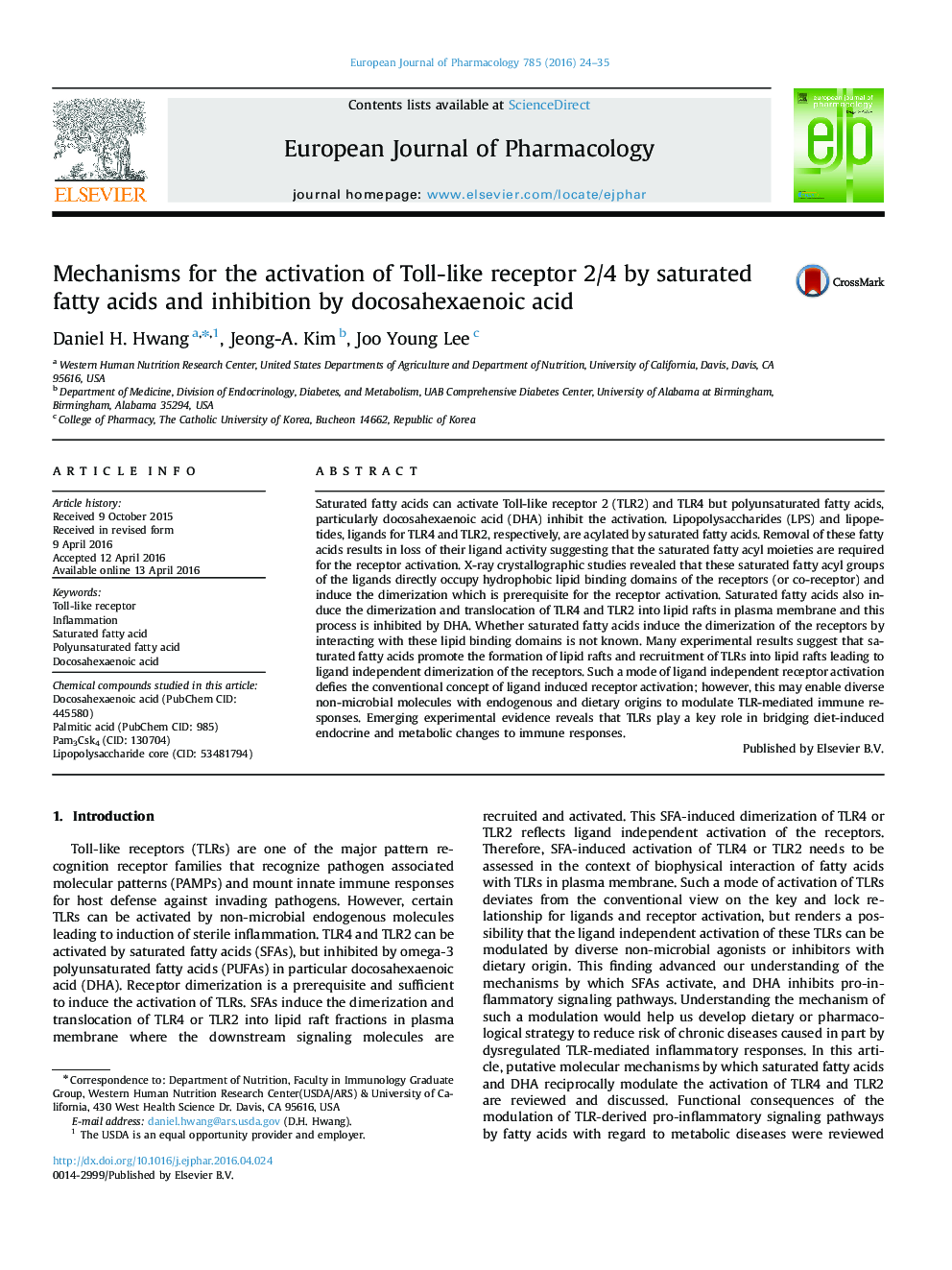| Article ID | Journal | Published Year | Pages | File Type |
|---|---|---|---|---|
| 2530870 | European Journal of Pharmacology | 2016 | 12 Pages |
Saturated fatty acids can activate Toll-like receptor 2 (TLR2) and TLR4 but polyunsaturated fatty acids, particularly docosahexaenoic acid (DHA) inhibit the activation. Lipopolysaccharides (LPS) and lipopetides, ligands for TLR4 and TLR2, respectively, are acylated by saturated fatty acids. Removal of these fatty acids results in loss of their ligand activity suggesting that the saturated fatty acyl moieties are required for the receptor activation. X-ray crystallographic studies revealed that these saturated fatty acyl groups of the ligands directly occupy hydrophobic lipid binding domains of the receptors (or co-receptor) and induce the dimerization which is prerequisite for the receptor activation. Saturated fatty acids also induce the dimerization and translocation of TLR4 and TLR2 into lipid rafts in plasma membrane and this process is inhibited by DHA. Whether saturated fatty acids induce the dimerization of the receptors by interacting with these lipid binding domains is not known. Many experimental results suggest that saturated fatty acids promote the formation of lipid rafts and recruitment of TLRs into lipid rafts leading to ligand independent dimerization of the receptors. Such a mode of ligand independent receptor activation defies the conventional concept of ligand induced receptor activation; however, this may enable diverse non-microbial molecules with endogenous and dietary origins to modulate TLR-mediated immune responses. Emerging experimental evidence reveals that TLRs play a key role in bridging diet-induced endocrine and metabolic changes to immune responses.
